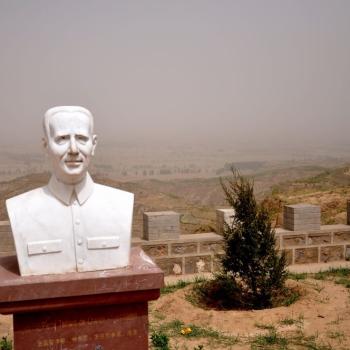
Vatican considering document on communications in age of ‘new media
By John Thavis Catholic News Service
VATICAN CITY (CNS) — The Vatican is considering the preparation of a major document on new media and their implications for the church’s communications strategy. Bishops from 82 countries began a five-day meeting in Rome March 9 to discuss modern media and the new culture of communications that has arisen in recent years. The seminar was sponsored by the Pontifical Council for Social Communications.
Archbishop Claudio Celli, president of the pontifical council, said the purpose of the seminar was to review with bishops the changing communications scene and see how the church should respond to the challenges and opportunities. The pontifical council, in a plenary meeting in late October, will then decide whether to go ahead with a new document on the subject, he said.
The modern church’s communications strategy has been based primarily on the Second Vatican Council’s 1963 decree “Inter Mirifica” on the instruments of social communications, and on the pontifical council’s 1991 pastoral instruction, “Aetatis Novae” (“At the Dawn of a New Era”).
Archbishop Celli said that since 1991 “a lot of water has gone under the bridge. New media are posing new questions, new interests and new pastoral necessities.” He said it was important for the church to understand that it’s not just new technological tools that have arisen, but a whole new attitude toward communication based largely on interactivity and dialogue. “The church today cannot only give information — which is certainly useful, but we cannot limit ourselves to that,” Archbishop Celli said. “I think the church needs to enter into a dialogue that is increasingly rich and proactive, a dialogue of life with people who are seeking, who are distant and who would like to find a message that is closer and more suitable to their path,” he said. For that reason, he said, his council has been pushing bishops around the world not only to have their own Web sites, but also to make sure these sites are interactive. Unfortunately, Archbishop Celli added, it’s been impractical for the Vatican to make its own Web presence interactive because it would be flooded by questions and comments from all over the world. It’s something more easily done on the local level, he said.
Archbishop George H. Niederauer of San Francisco, chairman of the U.S. bishops’ communications committee and a participant at the Vatican seminar, said effective use of new media is vital in reaching younger generations. “You go where they are. And where are they? They’re on programs like Twitter and Facebook and others,” he said. “We need to be present, and we need the young people to help us be present.” Archbishop Niederauer said the change in new media was in some ways like the change from the horse to the car a century ago. “Because 100 years ago, if an old man bought a car, who could fix it? His grandson or his son, because they learned the machinery. They headed straight for it; they didn’t look back,” he said. In a similar way today, he said, young people have seized on the communications opportunities of new media, and the church should welcome their talents and expertise.












